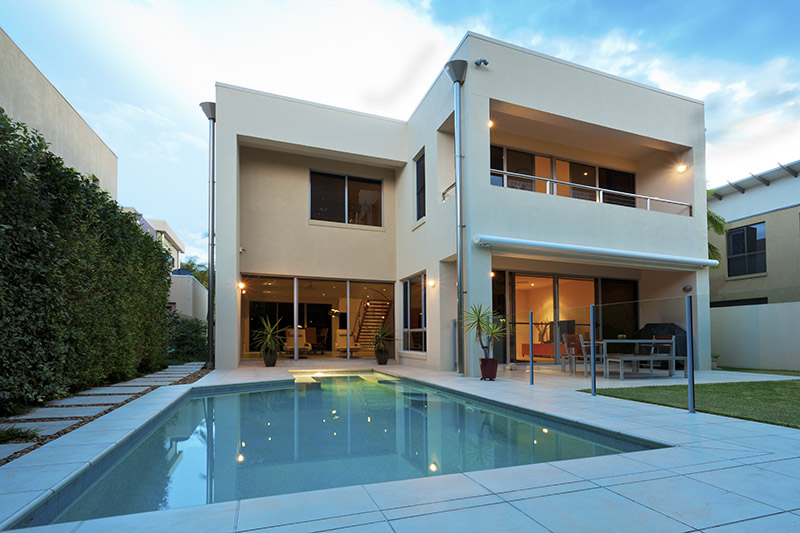
04 Nov Building an environmentally friendly house
Most of our clients come to us with a design brief to build an environmentally responsible home.
But what does this actually mean? Is it a conventional house with a few solar panels on the roof and some insulation in the walls? These measures can help but they are generally afterthoughts or add ons to pass your BASIX certificate. What can we do to make a real difference to the impact our homes have on the environment and at the same time create a comfortable, efficient to run family home?
1. Build more modest homes of higher quality
The average Australian home is the biggest in the world and increased in size by 40.3% from 1984-5 to 2002-3 (Source ABS Data Building Activity Survey). The next biggest is the USA at around 200 m2. If you want to build an true Eco house then you should consider reducing the overall size of the home. This will allow you to devote more of your budget to a higher quality construction and finish.
A smaller home will be easier to clean and cheaper to run over its lifetime resulting in further savings.
2. Building Orientation and Design
Every block of land is different and each of our designs will develop a unique response to the individual site and client requirements. When building an environmentally friendly house the building orientation and design is very important as this will determine the heat gain and loss of your glass and the cost of heating and cooling your new home.
3. Double Glazing
In my opinion it is only a matter of time before double glazing becomes the minimum requirement for all new home builds. Single glazed aluminium windows have a very poor thermal performance ( high U values ) and are typically installed without adequate sealing around the window to prevent air flow and heat loss. A good quality double glazed window or door will save you money on your heating and cooling bill with the added benefit of great sound insulation.
4. Building Insulation
Typically our clients are aware of the benefits of good insulation. A well insulated building will mean you don’t need to turn on the heating or A/C as often and it will be easier to maintain a comfortable temperature all year round.
The BASIX certificate controls the minimum insulation requirements but it is well worth the small additional cost to install the highest possible insulation to floors,walls, ceilings and roofs.
R3 polyester insulation is a good starting point for brick veneer and framed construction. Double brick and concrete construction still requires additional insulation as these materials have good thermal mass properties but are poor insulators.
Double brick walls without additional insulation have a low R value of 0.74, brick veneer is R 0.48 (source BCA Volume 1 Section J) both wall systems should have extra insulation to boost their thermal performance.

